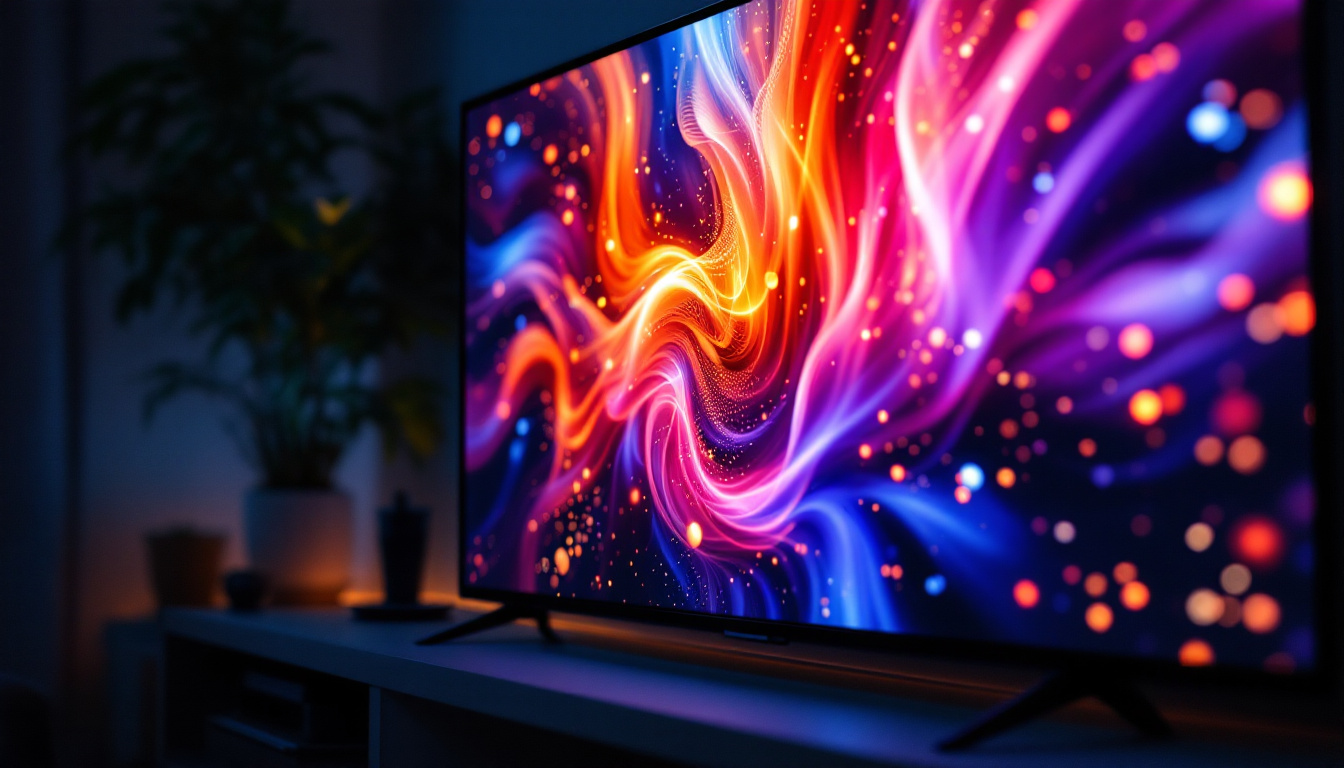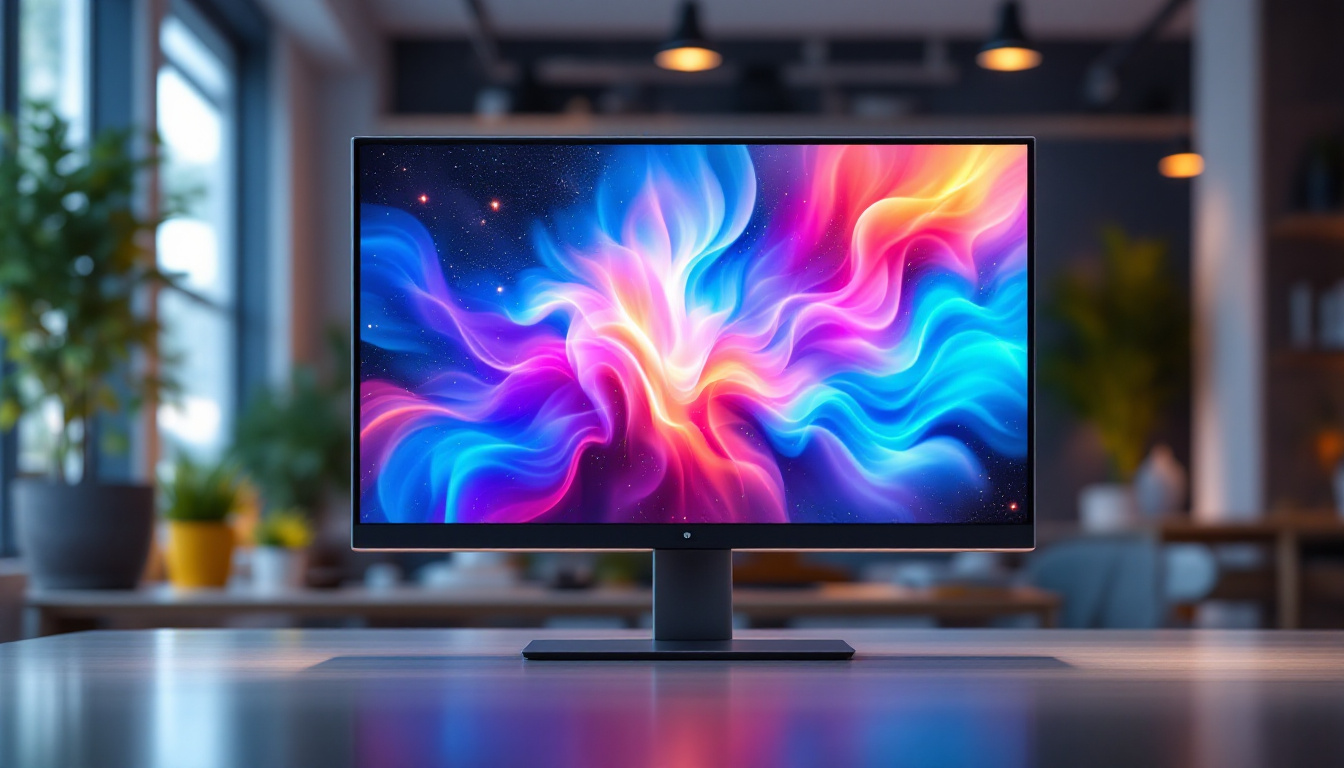Monitor OSD Locked: LED Display Explained
In the realm of modern technology, the monitor stands as a pivotal component of any computing setup. With the rise of LED displays, users often encounter various features and functionalities that enhance their viewing experience. One such feature is the On-Screen Display (OSD), which provides a user-friendly interface for adjusting settings. However, users may sometimes find themselves facing the “OSD Locked” message, which can be confusing. This article delves into the intricacies of OSD locking, its implications, and how it relates to LED displays.
Understanding On-Screen Display (OSD)
The On-Screen Display (OSD) is an essential feature in monitors that allows users to access various settings directly on the screen. This interface typically includes options for brightness, contrast, color calibration, and input selection. The convenience of OSD lies in its ability to provide a visual representation of these settings, making it easier for users to make adjustments without needing to navigate through complex menus or settings.
How OSD Works
When a user presses a designated button on the monitor, the OSD appears, overlaying the current display. This interface is controlled by the monitor’s internal software, which interprets user inputs and adjusts the settings accordingly. Each monitor may have a unique OSD layout, but common features include sliders for brightness and contrast, presets for different display modes, and options for managing input sources.
The OSD is particularly useful for those who require specific settings for different tasks, such as gaming, graphic design, or general office work. By allowing users to quickly switch between settings, the OSD enhances productivity and improves the overall user experience. Additionally, many modern monitors now offer advanced features within their OSD, such as the ability to save custom profiles for different activities. This means that a user can create a gaming profile with specific color settings and brightness levels, and then switch back to a standard profile for everyday tasks with just a few clicks.
Common Features of OSD
Most monitors come equipped with a variety of features within their OSD. These may include:
- Brightness and Contrast Adjustment: Essential for optimizing the display based on ambient lighting conditions.
- Color Calibration: Users can adjust the color temperature and saturation to achieve the desired visual output.
- Input Selection: Easily switch between different input sources, such as HDMI, DisplayPort, or VGA.
- Screen Positioning: Adjust the positioning of the display to ensure it fits well within the screen area.
These features contribute to a more tailored viewing experience, catering to the diverse needs of users. Furthermore, some OSDs also include advanced options such as image scaling, which allows users to adjust how content is displayed on the screen, ensuring that it fits perfectly without distortion. This is particularly beneficial for users who work with multiple applications or windows open simultaneously, as it helps maintain clarity and focus. Additionally, many monitors now feature built-in presets for specific tasks, such as reading or gaming, which automatically adjust multiple settings at once to enhance the viewing experience based on the activity being performed.
What Does “OSD Locked” Mean?
Encountering the “OSD Locked” message can be frustrating, especially when trying to make adjustments to the monitor’s settings. This message indicates that the OSD feature has been locked, preventing any changes from being made. This functionality is typically designed to avoid accidental adjustments, particularly in environments where multiple users may access the monitor. It serves as a safeguard, ensuring that settings remain consistent and that users do not inadvertently alter configurations that could affect performance or usability.
In addition to preventing unwanted changes, the OSD lock can also help protect sensitive settings that may be crucial for specific tasks, such as color calibration for graphic design or brightness adjustments for gaming. By locking these settings, manufacturers aim to enhance user experience and maintain the integrity of the display’s performance, especially in professional settings where precision is key.
Reasons for OSD Locking
There are several reasons why a monitor may enter OSD locked mode:
- Accidental Activation: Users may inadvertently activate the lock feature while attempting to adjust settings.
- Child Lock: In households with children, parents may enable OSD locking to prevent accidental changes.
- Public Use: Monitors in public spaces, such as libraries or classrooms, may have OSD locking enabled to maintain consistent settings.
Understanding the reasons behind OSD locking can help users navigate this feature more effectively, ensuring they can access their desired settings when needed. Additionally, knowing the context in which OSD locking is often utilized can shed light on its importance. For instance, in educational environments, maintaining a standard display configuration can prevent distractions and ensure that all students are viewing the same material without interruptions caused by accidental changes.
How to Unlock OSD
Unlocking the OSD is usually a straightforward process, though the exact method can vary depending on the monitor brand and model. Here are some general steps that can be followed:
- Check the Monitor’s Manual: The first step is to consult the user manual, which typically provides specific instructions for unlocking the OSD.
- Press the Correct Button Combination: Most monitors require users to press a specific combination of buttons to unlock the OSD. Common combinations include holding down the “Menu” button for several seconds or pressing a combination of the “Menu” and “Power” buttons.
- Access the Monitor’s Settings: If the OSD remains locked, users may need to navigate to the monitor’s settings using physical buttons on the device.
By following these steps, users can regain access to their monitor’s settings and make necessary adjustments. It’s also worth noting that some modern monitors may offer software solutions or on-screen prompts that guide users through the unlocking process, making it even easier for those who may not be technically inclined. Additionally, if the lock feature is frequently activated, users might consider adjusting their handling of the monitor or reviewing their settings to find a balance that minimizes accidental activations while still allowing for easy adjustments when needed.
The Role of LED Technology in Monitors
LED (Light Emitting Diode) technology has revolutionized the way displays are manufactured and perceived. Unlike traditional LCD monitors, which rely on fluorescent backlighting, LED monitors utilize an array of tiny diodes to produce light. This advancement has led to numerous benefits in terms of performance and user experience.
Advantages of LED Displays
LED displays offer several advantages over their predecessors, including:
- Improved Brightness: LED technology allows for higher brightness levels, making displays more visible in well-lit environments.
- Better Color Accuracy: LED monitors can produce a wider color gamut, resulting in more vibrant and accurate colors.
- Energy Efficiency: LED displays consume less power compared to traditional LCDs, contributing to lower energy bills and a reduced environmental footprint.
- Thinner Design: The compact nature of LED technology enables manufacturers to create sleeker and more aesthetically pleasing monitors.
These advantages have made LED displays the preferred choice for both casual users and professionals alike, enhancing the overall viewing experience.
LED Display Types
There are various types of LED displays, each catering to different needs and preferences:
- Edge-Lit LED: In this configuration, LEDs are placed along the edges of the screen, providing backlighting to the display. This design allows for thinner monitors but may result in uneven brightness.
- Full-Array LED: Full-array displays feature a grid of LEDs behind the screen, offering more uniform brightness and improved contrast ratios. This type is often favored for high-end monitors.
- OLED: Organic Light Emitting Diode (OLED) technology takes LED a step further by allowing each pixel to emit its own light. This results in exceptional color accuracy and deep blacks, though it tends to be more expensive.
Understanding the different types of LED displays can help users make informed decisions when selecting a monitor that best suits their needs.
Common Issues with OSD and LED Displays
While OSD and LED displays offer numerous benefits, users may encounter various issues that can affect their experience. Identifying these problems and understanding their solutions is crucial for maintaining optimal performance.
Screen Flickering
Screen flickering is a common issue that can occur in LED displays. This phenomenon can be caused by several factors, including:
- Refresh Rate Mismatch: If the monitor’s refresh rate does not match the output from the graphics card, flickering can occur. Adjusting the refresh rate in the display settings can often resolve this issue.
- Cable Issues: A damaged or loose cable connection can lead to flickering. Ensuring that all cables are securely connected and in good condition is essential.
- Graphics Driver Problems: Outdated or corrupted graphics drivers can cause display issues. Regularly updating drivers can help prevent flickering.
Addressing these factors can significantly improve the stability and performance of the monitor.
Color Inconsistencies
Another issue users may face is color inconsistencies, where colors appear different than intended. This can be attributed to:
- Incorrect Calibration: Monitors often require calibration to ensure accurate color representation. Using built-in calibration tools or third-party software can help achieve the desired results.
- Ambient Light Conditions: The surrounding lighting can affect how colors are perceived. Adjusting the monitor settings based on the environment can mitigate this issue.
- Panel Type: Different panel technologies (e.g., TN, IPS, VA) have varying color reproduction capabilities. Understanding the strengths and weaknesses of each type can guide users in their selection.
By being aware of these potential issues, users can take proactive steps to maintain their monitor’s performance.
Conclusion
In summary, the On-Screen Display (OSD) feature plays a vital role in enhancing the user experience with monitors, particularly those utilizing LED technology. Understanding the implications of OSD locking, along with the advantages and common issues associated with LED displays, empowers users to make informed decisions and adjustments. As technology continues to evolve, staying informed about these features will ensure that users can fully leverage the capabilities of their monitors, leading to a more productive and enjoyable computing experience.
Discover Cutting-Edge LED Display Technology with LumenMatrix
Enhance your visual experience with LumenMatrix’s innovative LED display solutions. Whether you’re looking to boost brand visibility, create immersive environments, or simply enjoy the highest quality displays for your computing needs, LumenMatrix has a wide array of options to choose from. Explore our Indoor and Outdoor LED Wall Displays, Vehicle LED Displays, LED Posters, Sports and Floor Displays, Custom Solutions, All-in-One units, and even Transparent LED Displays. Embrace the future of visual communication and make a lasting impression. Check out LumenMatrix LED Display Solutions today and see the difference for yourself.































